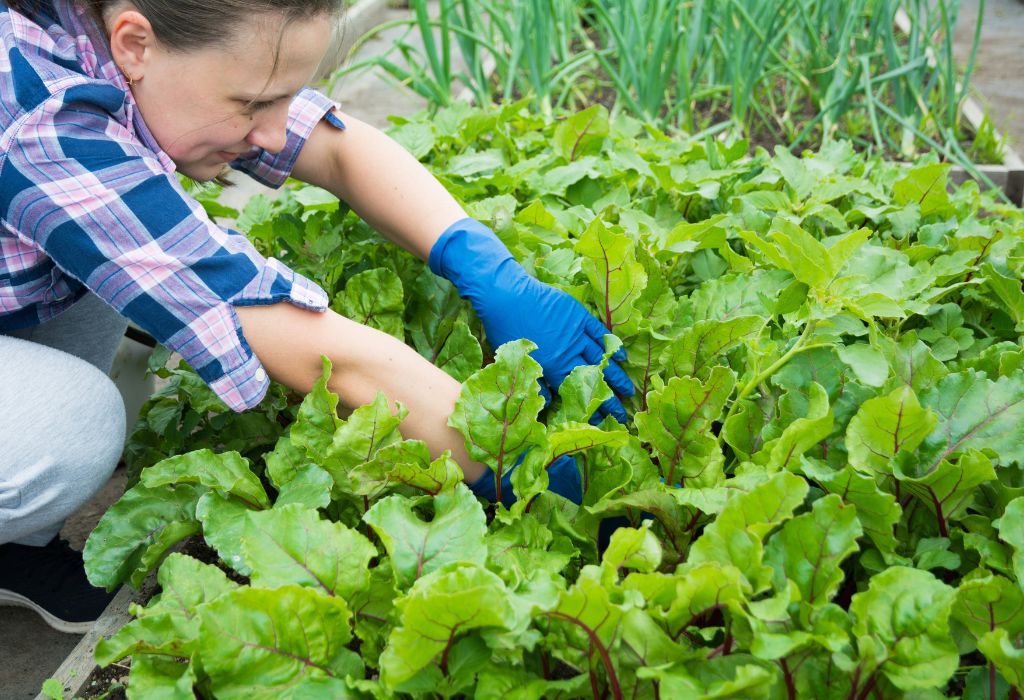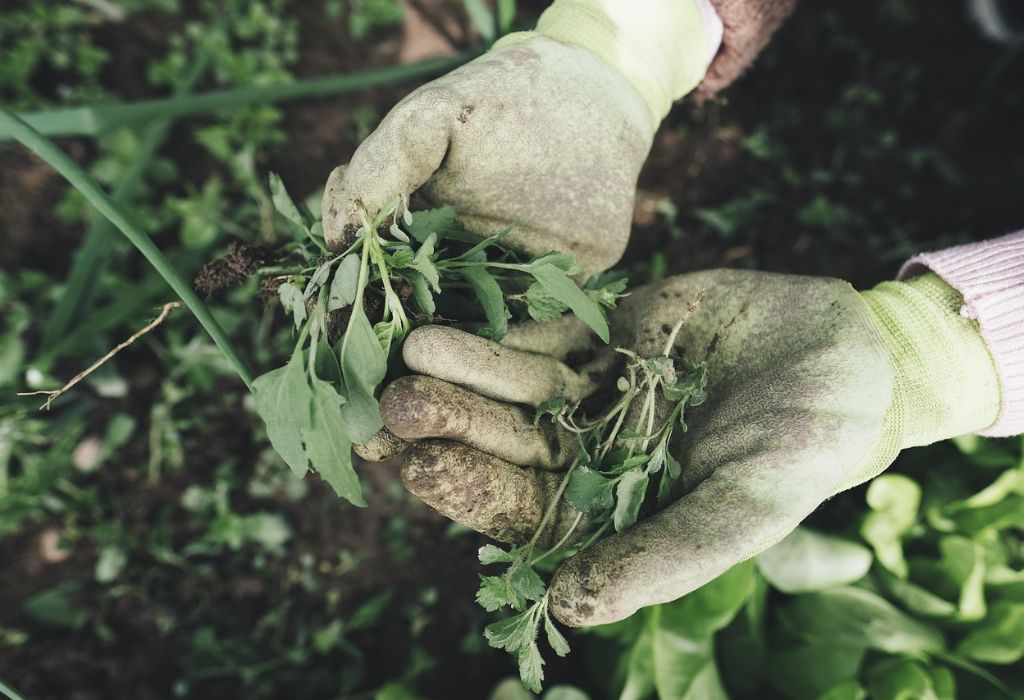Every gardener faces the same problem: weeds. They sprout faster than flowers, spread quicker than vegetables, and often take over entire beds if ignored. Studies show weeds can reduce crop yields by 30–50%, while a single dandelion plant can release up to 15,000 seeds in one season.
On average, gardeners spend more than 120 hours per year pulling weeds—often more time than watering, fertilizing, or pruning combined. The truth is, weeds are inevitable, but they don’t have to dominate your gardening time.
This step-by-step guide shows you exactly how to weed a garden properly, prevent regrowth, and adopt natural, eco-friendly strategies. Whether you’re new to gardening or looking to save time, this guide will help you take control.
I. Why Weeding Matters

Weeds may look harmless, but they directly impact your garden’s success.
- Nutrient competition – Weeds consume nitrogen, phosphorus, and potassium faster than your crops.
- Water theft – Deep-rooted weeds absorb moisture before shallow-rooted vegetables can.
- Shade effect – Tall weeds block sunlight, stunting plant growth.
- Pest habitat – Many weeds harbor insects, fungi, and diseases.
- Rapid multiplication – Some weeds spread thousands of seeds, creating future problems.
Without regular weeding, your garden can lose productivity, beauty, and long-term soil health.
II. Best Time to Weed a Garden
Weeding is most effective when timed correctly.
- After rainfall – Moist soil makes roots easier to pull.
- Early morning or evening – Cooler conditions reduce stress and fatigue.
- Before weeds flower – Stop seed production before it spreads.
- Weekly habit – Fifteen minutes a week prevents hours of heavy weeding later.
Pro Tip: A weed removed early saves you from pulling dozens later.
III. Tools and Supplies Needed
The right tools make weeding faster, easier, and more comfortable.
- Gardening gloves – Protect hands from thorns and blisters.
- Hand trowel – Removes shallow weeds near delicate plants.
- Hoe or stirrup hoe – Cuts weeds below the soil line.
- Weeding knife – Perfect for taproots like dandelions.
- Bucket or wheelbarrow – Collects pulled weeds for disposal.
- Mulch or compost – Covers soil and prevents regrowth.
IV. Step-by-Step: How to Weed a Garden Properly
Follow this structured process:
- Prepare the soil – Lightly water or wait until after rain.
- Identify weeds vs crops – Avoid pulling seedlings by mistake.
- Pull small weeds by hand – Grasp the base and pull slowly to remove the root.
- Use tools for larger weeds – Knives and hoes work best for deep or stubborn roots.
- Dispose properly – Bag weeds or compost only if seed-free.
- Refill and level soil – Smooth out holes to prevent erosion.
- Apply mulch – Cover soil with 2–3 inches of mulch to block light and suppress regrowth.
V. Natural & Chemical-Free Weeding Methods
Many gardeners prefer eco-friendly approaches that protect soil and pollinators.
- Hand pulling – Reliable for small beds and seedlings.
- Mulching – Reduces weed growth by up to 80%.
- Boiling water – Ideal for cracks in paths or patios.
- Vinegar spray – Works on young weeds; avoid hitting crops.
- Flame weeding – Quick, effective, and safe for walkways (not near flammable mulch).
VI. Preventing Weeds from Returning
Weeding once is not enough—you need prevention.
- Plant densely – Thick spacing shades the soil, starving weeds of light.
- Cover crops – Rye or clover suppress weeds in off-seasons.
- Crop rotation – Breaks weed growth cycles in vegetable beds.
- Garden borders – Stop lawn weeds from creeping into beds.
- Annual mulching – Refresh mulch to maintain weed suppression.
VII. Common Mistakes to Avoid
Weeding mistakes can make the problem worse.
- Leaving root fragments – Perennial weeds regrow from tiny pieces.
- Waiting too long – Mature weeds spread seeds.
- Over-tilling soil – Brings dormant weed seeds to the surface.
- Using contaminated compost – Introduces new weeds into your garden.
- Ignoring walkways – Weeds spread quickly from paths to beds.
VIII. Seasonal Weeding Tips

Each season requires a different approach.
- Spring – Weed before planting; apply mulch early.
- Summer – Weed weekly; pull before weeds flower.
- Fall – Remove perennials and sow cover crops.
- Winter – Clear beds to prevent early-spring sprouting.
IX. Comparison Table: Weeding Methods
| Method | Best Use Case | Pros | Cons |
| Hand Pulling | Small weeds, garden beds | Precise, no tools needed | Time-consuming for large areas |
| Mulching | Beds & borders | Suppresses up to 80% of weeds | Requires refreshing annually |
| Vinegar/Boiling | Paths & cracks | Natural, chemical-free | Can harm nearby plants |
| Flame Weeding | Walkways, driveways | Fast, effective | Not safe near dry mulch |
| Hoeing | Open soil areas | Quick for rows & veg beds | Can disturb soil if overused |
X. FAQs: How to Weed a Garden
- How often should I weed?
Once per week is ideal during growing season. - What’s the easiest way to weed?
Pull weeds after rain when roots come out easily. - Can vinegar kill weeds?
Yes, but it may damage nearby plants. Best for patios and edges. - Should I compost weeds?
Only if they haven’t seeded. Seeded weeds should be bagged and removed. - How do I stop weeds permanently?
Use mulch, ground covers, and consistent weekly checks.
XI. Quick Stats & Facts
- Weeds can reduce yields by up to 50%.
- Gardeners spend an average of 120+ hours annually weeding.
- Mulching cuts weed growth by up to 80%.
- Cover crops reduce weed pressure by 50% or more.
- A single dandelion can produce 15,000 seeds.
Conclusion
Weeding may feel endless, but with the right strategy, it becomes manageable. By combining timing, tools, and prevention, you’ll spend less time fighting weeds and more time enjoying your plants.
The secret is consistency. Weekly care, mulch, and smart planting habits will transform your garden into a space where crops thrive and weeds struggle to survive.
With these methods, you’ll master the art of weeding—and your garden will thank you with healthier, stronger plants.
I’m Maya L. Greenwood, a lifelong plant lover who believes anyone can grow something beautiful with the right guidance. After years of testing soil mixes, pruning methods, irrigation tricks, and pest-safe solutions, I started EasyGardenTips.com to turn hard-won lessons into step-by-step advice. From seed starting and container gardens to composting and seasonal checklists, my goal is to make gardening simple, sustainable, and fun.
